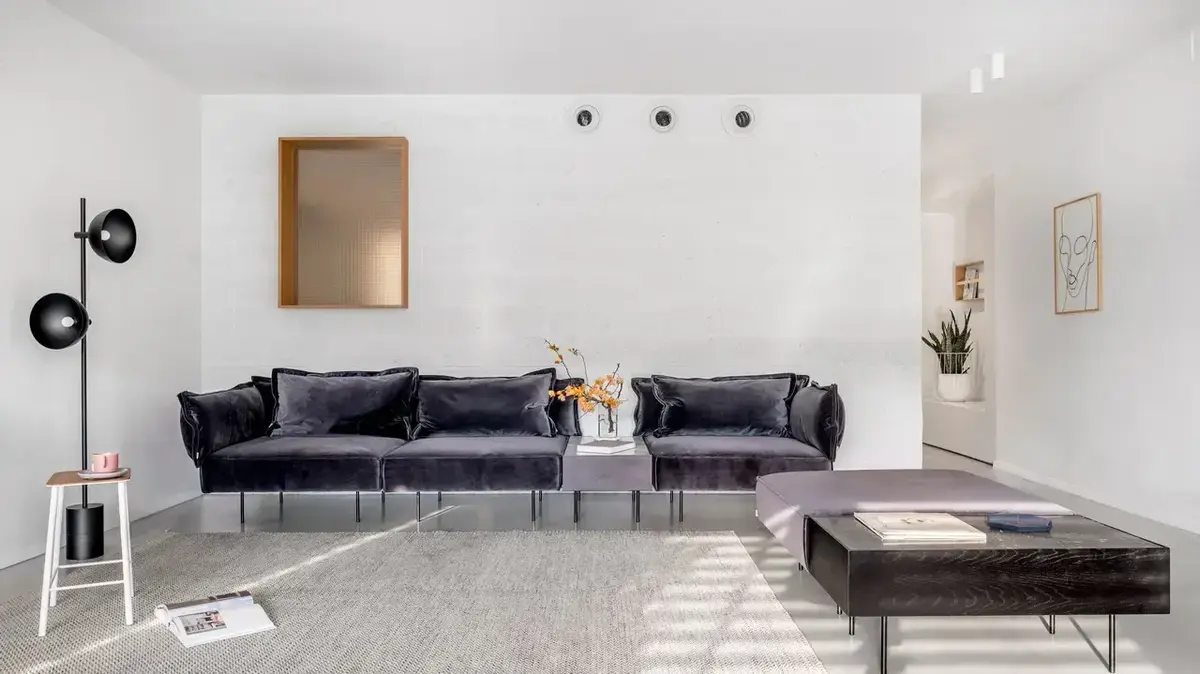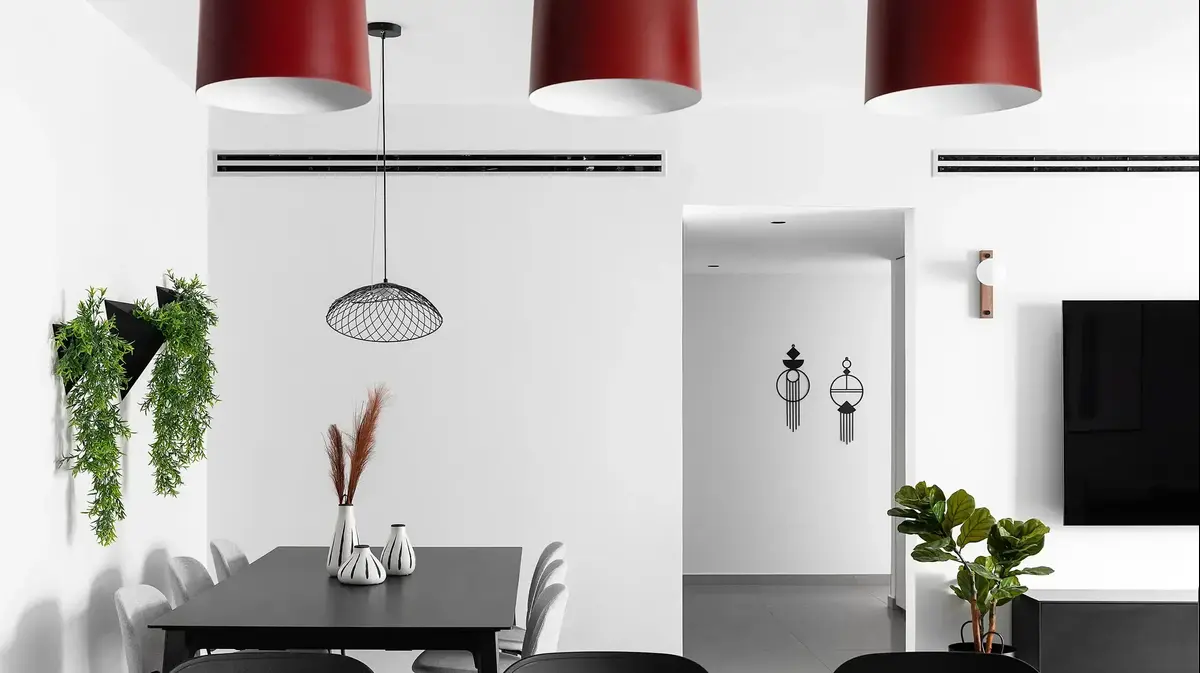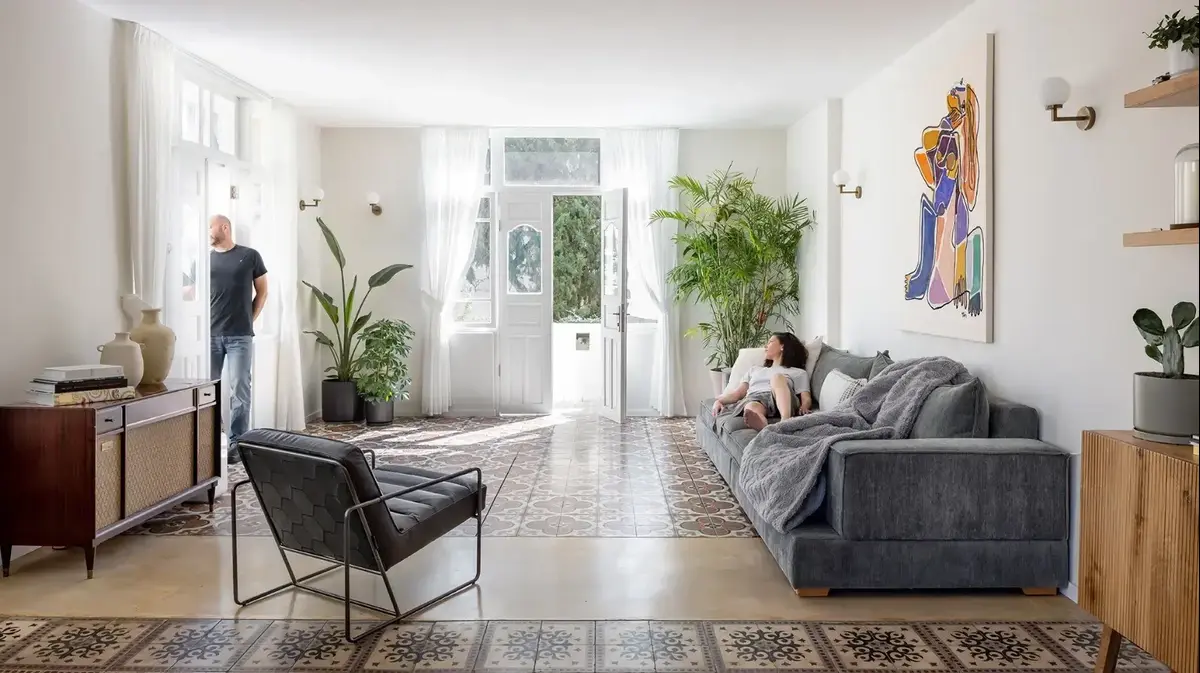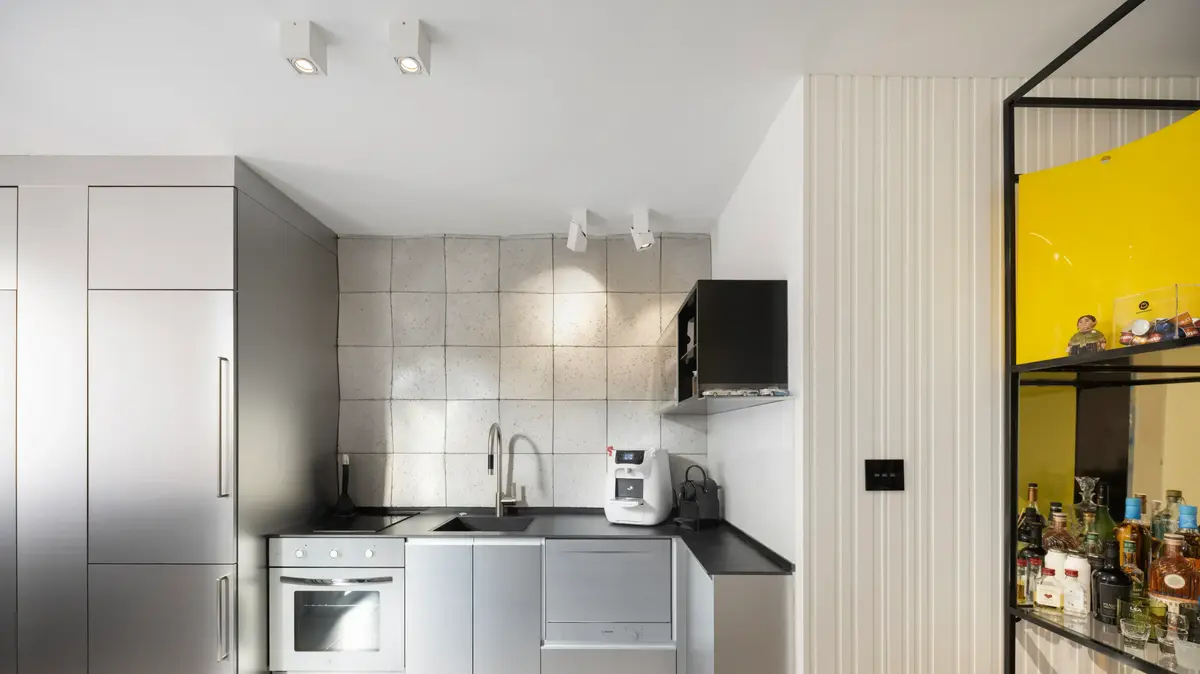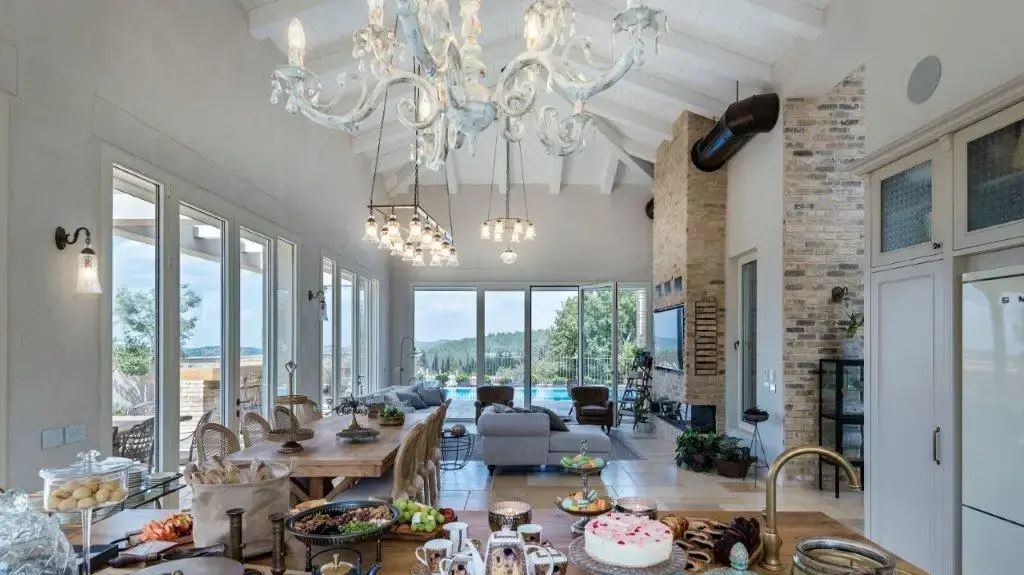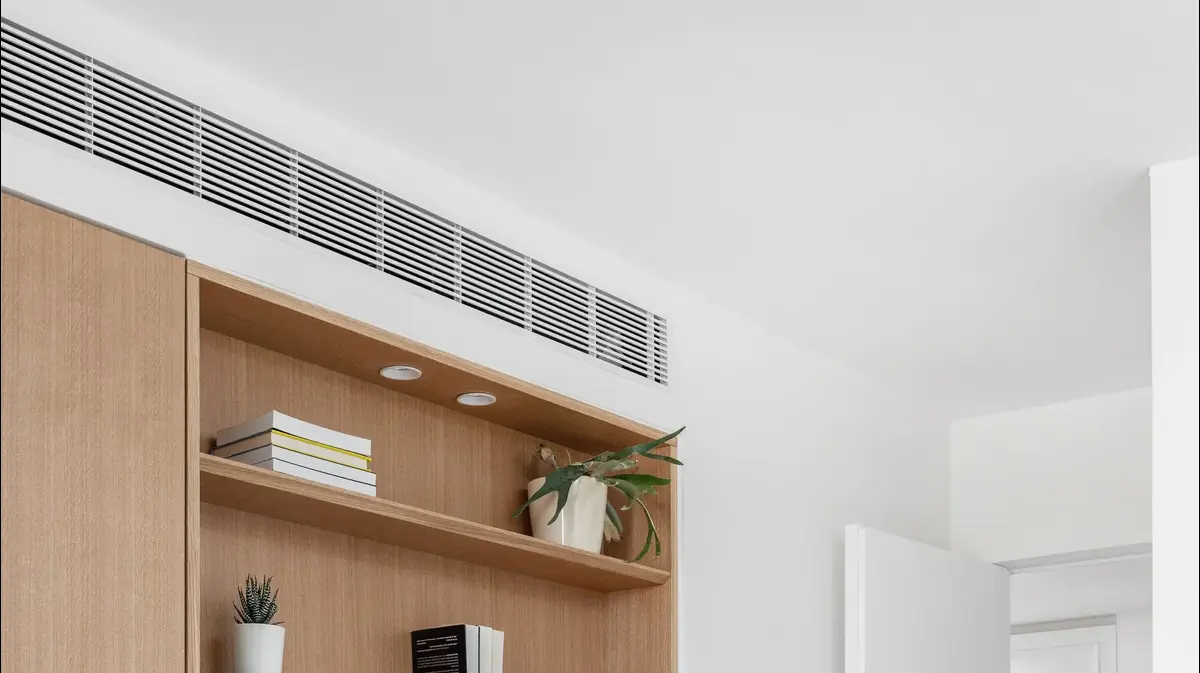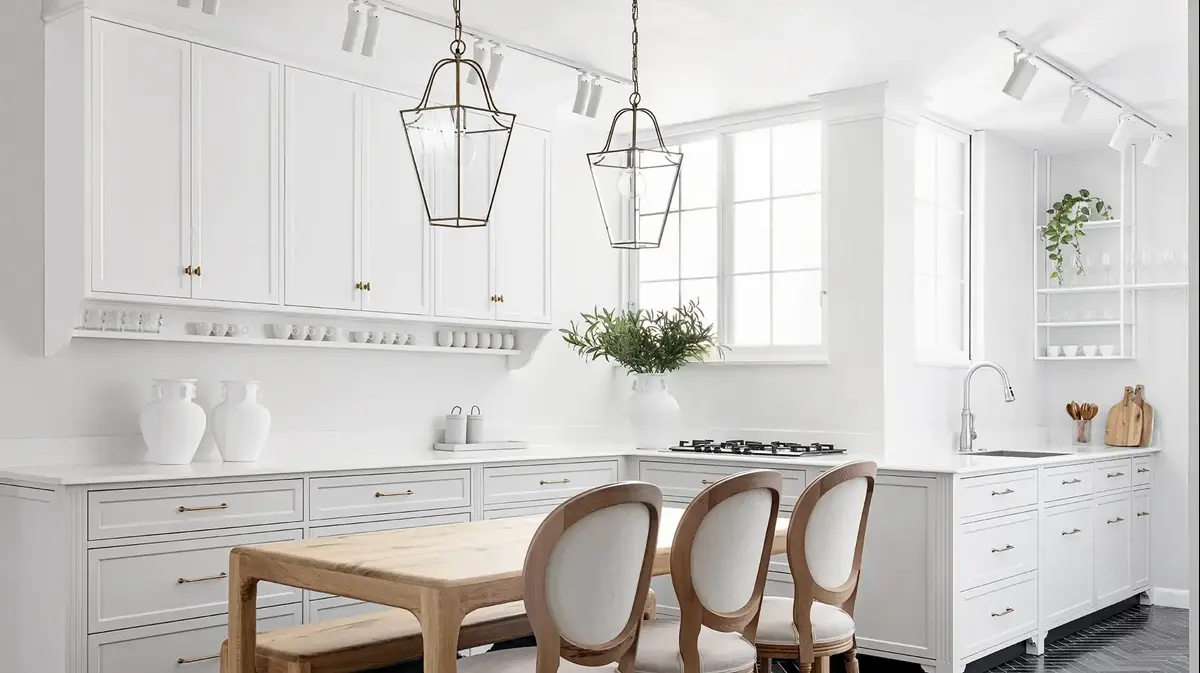Compression is not required (Photo: Yoav Peled, Studio Peled)
Design:
Eilat Dr
Photographer:
Yoav Peled, Studio Peled
The executive contractor:
Leith Haj Yahya
Executive carpenter:
Raphael Zanduri (Amit Rafi Zanduri furniture)
Furniture:
pas normal
Design and lighting fixtures:
Olli Gershovitz for exclusive in the port
Belgian ironwork and profile:
Ofer Alon locksmith
A new style has begun to dominate the world of interior design in recent years - JAPANDI.
What is it about, actually?
We sat down to talk with interior designer Eilat Dar, who specializes in designing living spaces and whose work is mainly influenced by the minimalist design style.
In a conversation with her, she explained to us once and for all what the new JAPANADI design concept is and why we Israelis should adopt it as a way of life.
"When we think of minimalist design, we are likely to think of Scandinavian or Japanese interior design - two approaches that each in their own way include the philosophy of "less is more". They celebrate refined quality, delicacy and art and add a whole new definition to luxury. When Japan's doors were opened to visitors In the 50s of the last century, Danish designers flocked to it and discovered a new and fascinating world. They discovered that the Japanese concept wabi sabi celebrates the same principles of minimalism, natural materials and simplicity just like the Danish concept - hygge. Since then, the Nordic designs began to be influenced by Eastern aesthetics, which brought for a perfect marriage between simplicity and elegance. When they combined these two design approaches together - a new and unique design concept was born, called JAPANADI - a union between Japan and Scandinavia. The new design concept focuses on simplicity and creating a peaceful and warm living environment with a minimalist arrangement. Some would say that JAPANDAI is more Spirit is only a way to decorate the space."
Modest and pleasant (photo: Yoav Peled, Studio Peled)
JAPANADI on the Israeli mentality: "It seems that Israelis are afraid of the word minimalism. As a designer, one of the many questions I encounter is 'It feels too empty - is there enough storage? Where are all the things stored?'
"For most of us it is difficult to find the connection between the Israeli house and Japanese or Scandinavian design. But if we go back a few hundred years in the history pages of Japan and Denmark, it seems that both cultures developed in very harsh natural environments, with hundreds of years of history of wars and conquests. If that sounds familiar to you or if you identify - then rightly so. From this difficult environment both cultures learned to accept things and move with the current instead of swimming against it. They learned to appreciate nature, simplicity and authenticity with the understanding that an aesthetic living environment is above all a kind of mental state that affects The inner self. Precisely today, under the stress and pressure of modern life and the Israeli reality in particular, our home as a peaceful living environment is an essential need. Our home should be an inviting and warm place, a place where we can relax, be filled with inspiration and renewed strength."
A strong connection to the Scandinavian design philosophy (Photo: Yoav Peled, Studio Peled)
THE JAPANADI DESIGN CHARACTERISTICS.
One of the central ideas behind the design and one of the strong links between the Scandinavian and Japanese design philosophy is minimalism.
Both strive for simplicity and completely remove all layers until nothing is left but perfection.
This does not mean, of course, that living in a minimalist environment involves asceticism, without any comfort or the need to get rid of all our personal belongings.
The intention of minimalism is to remove unnecessary decorative layers while focusing on simple lines and bright spaces free of clutter.
Instead of throwing away things you have already purchased - try to consume less, get rid of popular consumption habits.
Prefer quality items, even if few, but those that are really special to you and will accompany you for many years.
"The Japanese design approach and the Scandinavian design approach are very similar, both strive for simplicity and perfection. And yet, where they are different - they complement and balance each other: while the Japanese interiors are very elegant, the Scandinavian interiors are more rustic and alternatively the rich earth colors of the Japanese design prevent the color palette The monochromatics of Scandinavian homes feel austere or too cool. You could say it was only a matter of time before they blended into the new aesthetic known as Japandi."
A bigger space, a nicer atmosphere (Photo: Yoav Peled, Studio Peled)
Der explains that when we come to design our home inspired by the JAPANADI design, we should pay attention to a few main principles:
Order and organization:
one of the most important principles - a clean space and not cluttered with items and objects.
Store 80% of your belongings in a closed place and display only 20% - the ones you like the most and that calm you down the most.
Lighting:
According to the JAPANADI, the purpose of the lighting is to create a relaxing atmosphere, therefore the lighting will be functional but beautiful and unique, without standing out or drawing too much attention from the rest of the space. A perfect balance between style and comfort. Subtlety is the key word - warm and diffused light that simulates Candlelight Stronger lighting is reserved for rooms where it is needed such as the bathroom or kitchen.
Colors:
balancing the contrast between light shades and the natural dark shades and earth colors.
Beware of light shades so as not to create a space that is too sterile.
Materials and textures:
bring nature into the home - organic and natural materials occupy a place in Scandinavian and Japanese design and reflect their important relationship with nature and the environment.
Since the quality of natural materials tends to be high, this translates into increased longevity and over time tend to look better than artificial materials.
Wood, natural stone, bamboo, wool, leather paper and straw will add a lot of warmth to a bright and open space."
Home and design
Tags
exterior design

